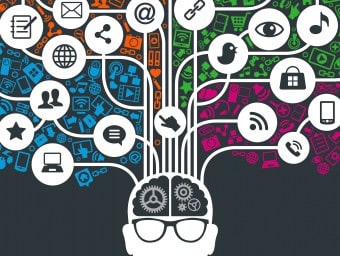Confessions of a Neuromarketer Part 3: The Brain is the Battleground
Neuromarketing is helping businesses save time and money while reducing risk in a number of areas. Read below how...
14 Jan 2025 6750 ViewsConsumer neuroscience (the most recent term used to describe neuromarketing) is a powerful tool that provides meaningful insights regarding the non-conscious processes that underlie consumer behavior and decision-making. It allows marketers to measure people’s emotions while they are interacting with a brand or product. It also shows whether the brand’s promise is credible, as well as whether or not consumers believe competitors’ claims.
While the term neuromarketing may sound foreign to many marketers, its basic premise should not be. It was established among marketers in the 1970s and championed by Al Ries and Jack Trout1, who emphasized the importance of the mind in predicting the success of a product. They maintained that, “Positioning is not what you do to a product. Positioning is what you do to the mind.” In fact, they named their landmark 1981 marketing strategy book Positioning: The Battle for your Mind. If the brain is indeed the battleground, then neuromarketing illuminates the terrain.

Neuromarketing is helping businesses save time and money while reducing risk in a number of areas. It does so by identifying emotional and non-conscious triggers that drive brand preference and purchasing behavior. Research shows that consumer behavior relies heavily on automatic actions and evaluation processes that happen below the conscious level. These processes cannot be detected by traditional research methods that rely on peoples’ declarative claims. Hence, the added value that neuromarketing brings to businesses and market research stems from its ability to pinpoint those subtle reactions and interpret them in the business context.
Applications of consumer neuroscience
Companies are currently using consumer neuroscience research to cover a wide range of marketing activities from strategy to campaign execution. Below are a few of the areas we find interesting the most:
New product development
If we speak about a new product that is being developed, neuro-research can be used, from the early stages, to test customers’ reactions to different names or product characteristics (such as flavor, color, texture, etc.), and/or to test different visual identities and packaging layouts. When it comes to launching the product, marketers can also test its positioning, attributes, and claims, and can compare their product performance with that of their competitors’.
Entering new markets
One of the areas where neuromarketing offers the most value is marketing over borders. Entering new and foreign markets is one of the most risky moves a company can make. That’s because even among groups with similar demographics, people’s perceptions, needs, attitudes, and buying behavior tend to vary significantly from one country to the next, shaped by different cultures and the local market situations. It is not uncommon for selling points, visuals, positions, or tag lines that work well in one country to fail or even offend in another.
That’s why neuromarketing offers tremendous value to international marketers. Used properly, neuromarketing can anticipate cultural issues by highlighting differences in consumer perception that are otherwise invisible on the surface. Before entering a new market, we can measure customers’ genuine perception regarding all the elements of the marketing effort – from understanding the right positioning to choosing the right claims and assessing visual elements, along with identifying the subtle language cues that should be used or avoided in communication.
Assessing current marketing efforts
If the product has already been on the market for a while and consumers are familiar with its communication, then we can test their attitude toward that brand and product. We can test the product claims and attributes to see whether they are credible and whether they belong to that brand or to the competition. We might also find attributes that are strongly linked to the category, but that don’t belong to any particular company. We can then be the first to claim them in our communication.
Predicting in-store behavior
There is often a big discrepancy between how traditional market research tells us consumers will behave and what actually happens in real-life situations. Marketers complain that customers don’t behave in-store as they say they would behave when questioned in focus groups or in answering surveys. Behavioral neuroscience addresses this issue by studying consumers in their natural setting, while they shop. Currently, there are some technical challenges to accurately monitoring consumers’ brain activity as they shop. However, there has been great success overcoming these limitations with virtual reality.
Virtual reality represents the best environment to conduct shopper studies because it is immersive and it tricks the brain into believing that this is the real thing. That’s why people’s reactions elicited through virtual reality are so similar to what we observe in real life. For instance, combining a virtual supermarket with neurometrics brings the best of the two worlds – you get the insights derived from neuro-research in a controlled environment, while the shopper has total freedom to behave naturally.
One of the main benefits comes from the fact that the research is done in-context: shoppers’ habits and behaviors are studied in an almost-real-life setting, while they shop for their favorite brands. The Virtual Shopper Journey is the most advanced platform (to date) that allows for this kind of research.
On our blog you’ll read also about how to define your brand.
The process
Neuromarketing research can take many forms, but the process of running a project always follows the same core steps. Regardless of the methodology or input to be tested, attention to these four mandatory steps help ensure a successful project:
- Clarification of objectives
One of the most important steps is setting the objectives. There has been a lot of misconception surrounding the power of neuromarketing. Because of this, marketers often have unrealistic expectations. It is, therefore, important to understand what neuromarketing can and can’t do for your business so that you know what to expect from your research agency. As Steve Genco puts it in his best-seller Neuromarketing for Dummies2, “…too many neuromarketing studies end in disappointment because clients didn’t have adequate grounding in neuromarketing principle and didn’t know what to expect.”
- Stimuli Design
The stimuli represent the material to be studied. They could be anything from video, to print, audio, online, or even a real-life or virtual reality experience. They can also be a combination of different media.
This step is crucial because it can make or break the study. If the right questions aren’t asked, we won’t get the answers that we are looking for. A poorly designed study will leave you guessing at the end and might even lead you in the wrong direction as well.
- Data Collection
Neuromarketing studies usually require a small sample of participants compared to traditional research, which generally needs a larger number of respondents segmented on a wide range of criteria. It is common to split the target into two groups, by either gender or user preferences. However, as with any study, recruiting the right people is of tremendous importance as it can compromise the whole project when not executed properly.
- Data Analysis
The data collected through various tools (EEG, eye-tracking, GSR, facial coding, etc.) is cleaned and filtered in order to get rid of the noise and artifacts that contaminate the recordings. Then, it is processed and analyzed in order to reveal people’s overt and covert reactions to the stimuli and to correlate those reactions with the tested messages.
We’ve seen over the course of these three blog posts (Read part 1 and part 2) the benefits and limitations of consumer neuroscience research. We’ve looked at the added value that it brings to businesses, discussed the differences from traditional marketing research, and taken you through an overview of the process. When considering all the pros and cons of utilizing neuroscience research, the question now must be asked: What is the main benefit that your company would get from employing consumer neuroscience in its research toolbox?
This is a guest post by Dr. Ana Iorga, the founder of Buyer Brain, the first neuromarketing agency in the TAAN Worldwide network. Ana has a medical degree and is currently a PhD Candidate at the Bucharest University School of Economics. She is an active member of the Neuromarketing Science & Business Association and a frequent speaker on the topic. Dr. Iorga is based in Bucharest, Romania.
References:
1Trout, Jack, and Al Ries. Positioning: The Battle for your Mind. Warner Books, 1981.
2Genco, Stephen J., Andrew P. Pohlmann, and Peter Steidl. Neuromarketing for Dummies. John Wiley & Sons, 2013.
Like this post? You'll find more marketing insights in my new book: International Brand Strategy: A guide to achieving global brand growth, now available from booksellers globally. Order your copy here.






3 replies
Nice information ….. thanks a lot for sharing …
Nice and so informative it is so useful for all the users.Thank you so much continue the latest postings.